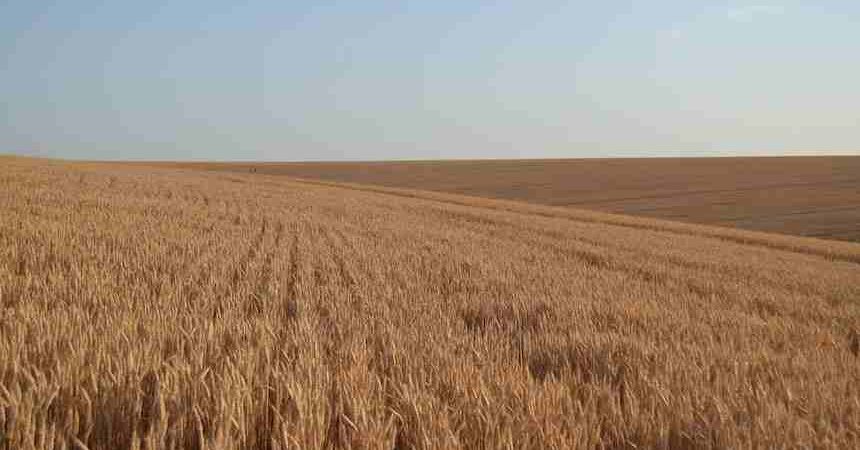California crops for business Top 5 reasons
California crops produces more than any other country in the world. So buying crops from California online and offline has become a profitable business. We have discussed, in detail below, the information that will help you to trade crops from California.
California Crops Report for Business:
According to the California Crops Report, the production for 2019 is $3.25 billion, representing a 3% decrease from the previous year. Prices for field crops, including barley, potatoes, hay (except alfalfa) and cottonseed, were higher than last year. That year there was a significant decline in yields, including oats, durum wheat, sorghum and rice. Field crop prices were slightly lower for corn grain and alfalfa hay. The total value of the potato crop increased by more than 39 per cent over the previous year.
Additionally, over the year, there was a 9 percent increase in planted acreage of the potato crop, a 10 percent increase in yield and a 16 percent increase in price per hundredweight. Seventy-two percent of California’s total barley crop was harvested that year. Sixty thousand acres were planted to barley, of which 43,000 were harvested for Grain. Overall, barley production increased by 58 percent year-on-year and crop value increased by 50 percent. The price of $191.67 per ton of barley represents a 5 percent decrease from the previous year.
Field values of California Crops:
Field values of California Crops for 2019 are down 42 percent faster than the previous season. This loss in crop value resulted in a 17 percent decrease in harvested acres, a 27 percent decrease in yield per acre, and a 5 percent decrease in value per ton. This year 420,000 acres of wheat were planted that year. Prices for the total winter wheat crop are down 44 percent from 2018, while durum wheat production and prices are down 36 percent for the same period.
Hay production (excluding alfalfa) in California increased by about 1.7 million tons. Total hay (excluding alfalfa) valued at $253 million was a 19 percent increase over the previous year. For alfalfa hay, total production fell 4 percent from a year ago to 4.1 million tons and total value fell 3 percent to $844 million. For all hay, total crop value increased by 1 percent, value increased by 1 percent and acres harvested increased by 3 percent from the prior year.
That year, California Crops‘ total value of rice production was $776 million, representing a 16 percent decrease from 2018. Whole rice planting fell 2 percent to 498,000 acres planted in 2019. Medium grain rice accounted for 91 percent of the total and paddy 91 percent—93 percent of total production. The yield of long-grain rice increased by 22 percent, while the yield of short and medium-rice varieties decreased slightly compared to the previous year. As a result, the overall production of all paddy decreased by three percent compared with last year.
On the other hand, the corn value for California grain production was $46 million, representing a 7 percent decrease from 2018. Corn was harvested at 60,000 acres, down 8 percent from 2018. Corn yields for grain production are down 3 percent, and prices are up 3 percent yearly. Corn production for silage rose 8 percent from the previous year to 10.7 million tons in 2019.
California Crops Increases in Production:
Barley ………………………………………………….58%
Potatoes, All …………………………………………20%
Hay, Other ……………………………………………19%
Rice, Long …………………………………………..11%
California Crops Decreases in Production:
Oats …………………………………………………….-71%
Wheat, Winter ………………………………………-41%
Wheat, All ……………………………………………-40%
Wheat, Durum ……………………………………..-36%
Haylage and Greenchop, Alfalfa ……………..-23%
Safflower ……………………………………………..-22%
Rice, Short …………………………………………..-18%
Sunflower, Non-Oil………………………………..-13%
Cotton, American-Pima …………………………-11%
Corn For Grain……………………………………..-10%
Cotton, All ……………………………………………-10%
Sugar Beets ……………………………………………-10%
Increase and decrease in the production of fruit and nut crops:
In 2019, California crops produced 54 percent of total U.S. fruit and nut production, 69 percent of the nation’s total land area, and 73 percent of the nation’s total value. The state produced 15.8 million tons of fruits and nuts that year. The total value of which was about 21.5 billion dollars.
Almonds surpassed grapes as California’s number one prized fruit or nut crop this year, with a total production value of $6.1 billion, up 9 percent from the previous season. Grapes were second at $5.4 billion, down 14 percent from the prior year. California is the number one producer of grapes in the United States, accounting for 94 percent of total produced tonnage and about 95 percent of production value.
For nuts, California produces 77 percent of all domestic and global production. California is responsible for all the production of almonds, pistachios and walnuts in the country. For fruit, on the other hand, California is a top producer of kiwifruit, nectarines, olives, Kingston peaches, plums, prunes and raisins. California also accounts for a significant portion of many other fruit crops. The state produces more than 92 percent of the country’s avocado, grape, lemon, and mandarin.
Notable Increases in Production of California crops:
Olives………………………………………………212%
Dates ………………………………………………..61%
Apricots……………………………………………..39%
Mandarins ………………………………………….38%
Kiwifruit …………………………………………….36%
Cherries ……………………………………………..30%
Apples………………………………………………..23%
Orange, Valencia ………………………………..23%
Orange, All …………………………………………18%
Orange, Naval and Misc ………………………17%
Blueberries ………………………………………..14%
Almonds…………………………………………….12%
Lemons ……………………………………………..12%
Nectarines …………………………………………11%
Notable Decreases in Production California crops:
Pistachios …………………………………………-25%
Grapes, Raisin …………………………………..-16%
Strawberries ……………………………………..-12%


Leave a Reply